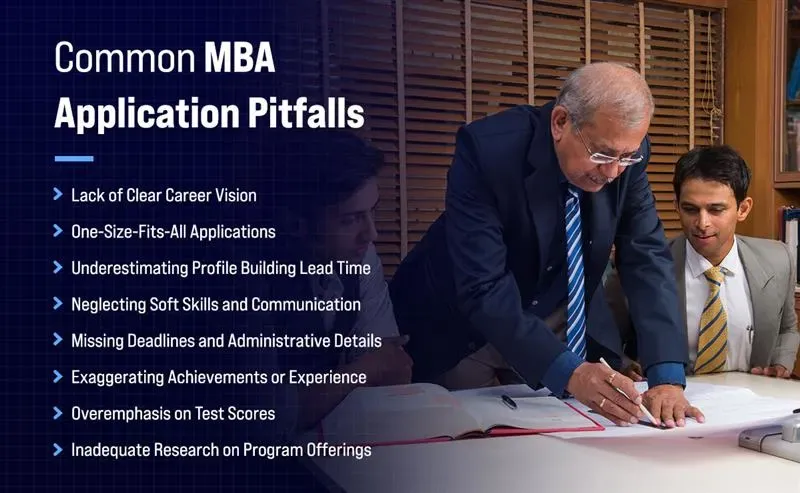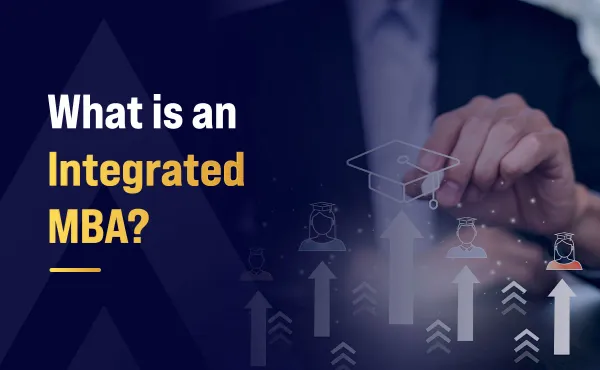How to Get Admission in MBA?

Pursuing an MBA from top B-schools in India is a proven pathway to transformative career growth, significant learning, and expanded leadership opportunities. However, the journey to securing a coveted seat at a tier 1 MBA institute such as the IIMs, XLRI, ISB, SPJIMR, FMS, or similar schools is marked by intense competition, intricate evaluation layers, and a need for strategic planning.
Whether you are a fresh graduate or a young professional with 1-3 years of experience, understanding every critical step of an MBA admissions process, right from preparations to common pitfalls, is essential for success.
This article deconstructs the entire admissions process and provides actionable insights so you can maximize your chances and fulfill your MBA aspirations in India.
Understanding the Indian MBA Admissions Landscape
Admission to top B-schools is fiercely competitive and defined by their rigorous academics, global exposure, faculty quality, placement success, and influential alumni networks. These B-schools seek students who demonstrate intellectual curiosity, all-round development, leadership inclination, and a clear sense of purpose.
Take IIM Ahmedabad’s two-year flagship PGP for example; it filters its cohort from roughly 20,000 top-scoring candidates in CAT yet admits only a few hundred. This means that beyond high scores, such institutes look for consistent academic performance from school through college, meaningful professional achievements, and a contribution to classroom diversity through different academic and career backgrounds.
Shortlisted applicants must then clear written assessments that test clarity of thought, group discussions that reveal communication and leadership, and rigorous interviews that probe reasoning, motivations, and cultural fit. Published cutoffs for sections and overall percentiles at premier schools are extremely demanding, as the admissions process is designed to identify potential candidates who not just do well academically but also thrive as responsible business leaders.
Core Admission Criteria
- Academic Qualifications: A recognized bachelor’s degree (minimum 3-year duration) with at least 50% marks (45% for reserved categories). Those in their final year may apply if their degree is completed before classes begin.
- Entrance Exams: Most top programs require scores in exams like CAT, XAT, GMAT, NMAT, or SNAP, held primarily between November and January.
- Work Experience: Both freshers and candidates with up to 3 years of experience are considered for full-time MBA programs in India. Certain programs (such as ISB PGP) mandate specific work experience, but most accept a range of backgrounds.
The Common Admissions Pipeline
Top B-schools follow a well-structured admissions pipeline, which include:
- Written Entrance Test (CAT/XAT/GMAT/etc.)
- Shortlisting candidates based on entrance exam scores & profile.
- Written Ability Test (WAT)/Essay and/or Group Discussion (GD)
- Personal Interview (PI)
- Composite score and final offer
MBA Admission Process
Here is a step-by-step admission procedure for a full-time MBA program in India.

1) Entrance Exam:
Major Exams: There are various MBA entrance exams that students can choose based on their specific requirements. The most widely chosen options are:
- CAT: Essential for entering the Indian Institutes of Management and numerous prestigious business schools nationwide.
- XAT: Essential for XLRI, XIMB, and other partner institutes.
- GMAT: Needed for Indian School of Business (ISB) and accepted by many IIMs for their one-year MBA programs, as well as certain other premier institutes.
- SNAP: Conducted exclusively for Symbiosis International (Deemed University) and its associated programs.
- NMAT: Mandatory NMIMS, and a select group of other institutions like SPJIMR Mumbai, Great Lakes Institute of Management, Woxsen University, etc.
Preparation Demands: Each exam tests quantitative ability, data interpretation, verbal ability, logical reasoning, decision-making skills, and general awareness.
2) Application & Profile Evaluation:
- Academic Record: 10th, 12th, and graduation scores are crucial, which showcase consistency, or an upward trend in performance.
- Professional Experience: Freshers should highlight internships, live projects, or entrepreneurial efforts.
- Extra-Curricular Activities: Leadership in college societies, sports, community work, and achievements outside academics also carry significant weight.
3) Shortlisting for Next Rounds:
- Institutes evaluate entrance exam percentiles, academics, work experience, diversity, gender, and extra-curriculars to create a shortlist for further rounds.
4) WAT, GD, and PI:
- Written Ability Test (WAT)/Essay: It tests clarity of thought, structure, and written communication.
- Group Discussion (GD): It helps assess communication skills, teamwork, logic, breadth of knowledge, and leadership.
- Personal Interview (PI): This is one of the most decisive stages, probing background, goals, general awareness, depth of experience, soft skills, and overall fit.
5) Final Selection & Offer
- A composite score is calculated, combining all stages with varied weightages, after which offers are extended to the highest-scoring candidates.
MBA Entrance Exams Eligibility
1) Common Admission Test (CAT)
Assessment Focus:
- Verbal Ability and Reading Comprehension: Critical reading, para-jumbles, and inference.
- Data Interpretation and Logical Reasoning: Includes interpreting graphs, tables, puzzles, and analytical problem-solving.
- Quantitative Ability: Arithmetic, algebra, geometry, and number-theory problems.
Key Details
- Registration typically opens in August, with the exam held in late November.
- Percentile cut-offs for IIMs often exceed the 99th percentile, making high performance essential for shortlisting.
2) Xavier Aptitude Test (XAT)
Assessment Focus
- Decision Making: Ethical dilemmas, case-based judgments, and managerial decision scenarios.
- Verbal and Logical Ability: Assesses comprehension, critical thinking, and the use of verbal logic.
- Quantitative Ability and Data Interpretation: Similar to CAT but often with higher difficulty in problem-solving.
Key Details
- Conducted by XLRI in early January.
- Additional sections may include General Knowledge and Essay Writing, depending on the participating institutes.
3) NMAT by GMAC
Assessment Focus
- Language Skills Test: Reading comprehension, grammar correction, and vocabulary knowledge.
- Quantitative Skills: Focus on solving problems related to arithmetic, algebraic expressions, and geometric concepts.
- Logical Reasoning: Involves sequences, arrangements, and syllogistic reasoning tasks.
Key Details
- Accepted by NMIMS Mumbai and over thirty partner institutes.
- Flexible testing window from early November to mid-December, with up to three attempts allowed.
4) Symbiosis National Aptitude Test (SNAP)
Assessment Focus
- General English vocabulary, grammar, and comprehension.
- Quantitative concepts, data interpretation, and data sufficiency understanding.
- Analytical and logical reasoning.
Key Details
- This exam is held typically in a single testing window during December.
- Candidates must pay an additional application fee for each participating institute.
5) GMAT and GRE
Assessment Focus
- GMAT: Examines quantitative reasoning, verbal ability, integrated reasoning, and analytical writing skills.
- GRE: Assesses verbal reasoning, quantitative reasoning, along with analytical writing proficiency.
Key Details
- Required for Indian applicants targeting programs that accept global scores, such as ISB’s one-year PGP or executive MBAs at IIMs.
- English proficiency tests (IELTS, TOEFL) may also be needed for certain programs with international accreditation.
Practical Tips:
- Always verify eligibility criteria and registration deadlines on the official exam website.
- Register early to secure preferred test dates and centers, especially for exams with multiple windows like NMAT or GRE.
- For tests offering multiple attempts, schedule your first attempt early enough to allow retakes and score improvements.
- Plan your exam calendar so that results reach your target programs before application deadlines.
By mapping your target schools to the right entrance exams and strategically planning your registration and preparation, you can ensure that your scores open doors rather than limit your opportunities.
Common MBA Application Pitfalls
Common pitfalls that can undermine even the most academically strong MBA application include:

1) Lack of Clear Career Vision
Candidates who apply “for the brand” without articulating specific post-MBA goals often struggles to make a persuasive case in essays and interviews. Top B-schools expect you to connect your past experiences, MBA learnings, and future ambitions into a coherent narrative.
2) One-Size-Fits-All Applications
Submitting identical essays, resumes, or answers for multiple schools signals superficial effort. Each institute has unique values, pedagogy, and areas of specialization—your application must reflect genuine research and alignment with each program’s culture.
3) Underestimating Profile Building Lead Time
Waiting until a few months before applications to boost your profile by starting a volunteer project or leadership role rarely convinces admissions committees. Demonstrate sustained impact over at least six to twelve months rather than last-minute activities.
4) Neglecting Soft Skills and Communication
Over-focusing on quantitative test preparation while ignoring communication drills for GD and PI can derail interview performance. Practice active listening, concise articulation of ideas, and persuasive storytelling in group settings.
5) Missing Deadlines and Administrative Details
Failing to track multiple exam registration windows, application deadlines, or document submission dates causes avoidable rejections. Employ calendar notifications or project tracking tools to ensure all deadlines and requirements are fulfilled.
6) Exaggerating Achievements or Experience
Inflating roles, metrics, or impact can be uncovered during interviews and damages trust. Provide accurate data such as specific project outcomes, budget sizes, or team numbers to demonstrate authenticity.
7) Overemphasis on Test Scores
Believing that a high CAT or GMAT percentile alone guarantees admission overlooks the holistic evaluation approach. Balance test preparation with narrative crafting, profile strengthening, and interpersonal skill development.
8) Inadequate Research on Program Offerings
Not understanding a school’s specializations, exchange partnerships, or faculty research areas prevents you from asking insightful questions and demonstrating genuine interest during interviews and campus visits.
By proactively addressing these common pitfalls, you can strengthen your application, enhance your interview readiness, and significantly improve your chances of admission to a top MBA program in India.
FAQ
Q1. Is a CAT exam necessary for an MBA?
Ans: No, CAT is not strictly necessary for every MBA admission, but it is essential if you want to apply to IIMs and many top Indian B-schools that list CAT as a primary selection measure. Many other reputable programs accept MAT, NMAT, CMAT, SNAP, state-level tests, or GMAT/GRE for international programs. Identify your target schools first and then pick exams that gate those schools.
Summing Up
Gaining admission to a top MBA program in India demands more than academic excellence and high entrance exam scores. It requires a strategic, well-rounded approach that integrates rigorous test preparation, authentic profile building, and clear articulation of career goals. Comprehending each institute's unique standards and customizing your application accordingly boosts admission prospects.
Successfully navigating this competitive environment calls for awareness of common mistakes that can weaken even strong applications. Careful planning, proactive self-assessment, and disciplined execution are essential throughout this journey.
In essence, the MBA selection process is a stage for candidates to demonstrate their leadership qualities, not simply an evaluation of academic knowledge. Approach it thoughtfully and intentionally, and you will be well-positioned to turn your MBA aspirations into a transformative reality.





